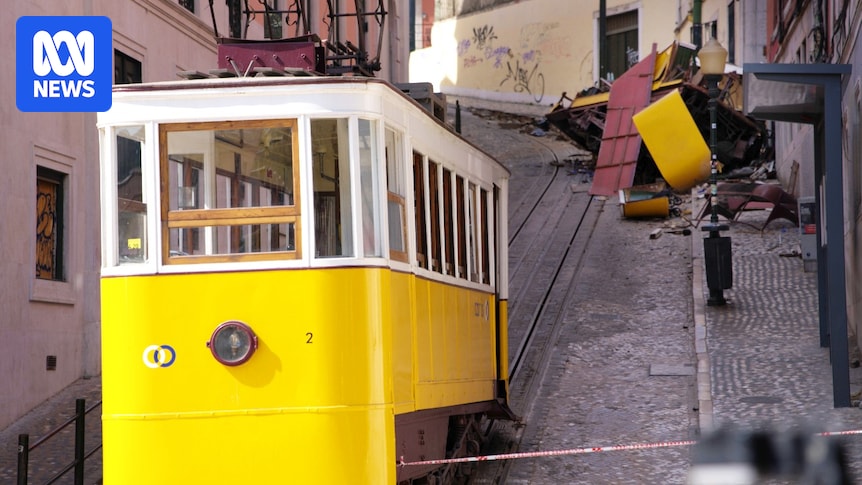
A maintenance tender for Lisbon’s historic Elevador da Glória, which tragically crashed on Wednesday, killing 17 people, was cancelled just days prior due to high bid costs. The incident has prompted a thorough investigation by authorities into the 140-year-old funicular’s derailment, which sent it careening down a steep hill into a building at approximately 6 p.m. local time.
In addition to the fatalities, 23 individuals sustained injuries in the crash. The Elevador da Glória, a beloved tourist attraction dating back to 1885, is operated by Carris, a publicly owned company. On Monday, Carris announced the cancellation of a maintenance tender citing that “the bidders’ proposals are higher than the base price.”
Despite the scrapped tender, Carris maintains that all scheduled maintenance checks have been adhered to. The company stated that “general maintenance” occurs every four years, with the last check in 2022, while “interim repairs” are conducted biennially, with the next scheduled for 2024. Additionally, Carris emphasized that “monthly and weekly maintenance programs and daily inspections have been scrupulously complied with.”
Concerns Over Maintenance Practices
However, concerns have been raised by Manuel Leal, a Portuguese union official, who noted that Carris employees have lodged “successive complaints” regarding the need for more rigorous maintenance of Lisbon’s funiculars. Leal has called for an independent investigation to determine the “root cause” of the crash, highlighting that workers have long advocated for maintenance responsibilities to be returned to Carris employees rather than outsourced to external companies.
In response to the tragedy, Carris chief Pedro de Brito Bogas affirmed the company’s commitment to cooperating fully with the ongoing investigation. “We need to learn from this incident,” echoed a colleague of the driver who perished in the crash.
Impact on Community and Tourists
The Elevador da Glória is a significant part of Lisbon’s cultural landscape, transporting approximately 3 million passengers annually on its steep 275-meter route between Restorers Square and the vibrant Bairro Alto district. The journey typically lasts about three minutes.
Eyewitnesses described the scene in the aftermath of the crash. Becky, an American tourist, recounted seeing body bags being removed. “I just feel for their families. We knew it was packed with tourists like ourselves, but their families are back home,” she expressed. “They’re going to get a terrible call. That just hits home.”
Josh, an Australian visitor, shared his proximity to the incident. “It’s just devastating,” he said. “It was quite surreal. I walked up that street about midday on Wednesday. It was so close. It easily could have been me.”
Lisbon’s mayor has declared three days of mourning, and the public prosecutor’s office has launched an investigation into the crash.
Historical Context and Safety Record
The Elevador da Glória has faced safety challenges in the past. Notably, a derailment occurred in 2018, though it resulted in no injuries. This latest incident has reignited discussions about the safety and maintenance of Lisbon’s iconic funiculars.
The announcement of the maintenance tender’s cancellation adds a layer of complexity to the investigation, as authorities seek to understand whether financial constraints played a role in the tragedy. Meanwhile, the focus remains on ensuring the safety of the city’s historic transport systems and preventing future accidents.
As the investigation unfolds, the residents of Lisbon and visitors alike are left grappling with the impact of the crash. The incident serves as a stark reminder of the importance of rigorous maintenance and oversight in preserving the safety of beloved historical landmarks.





